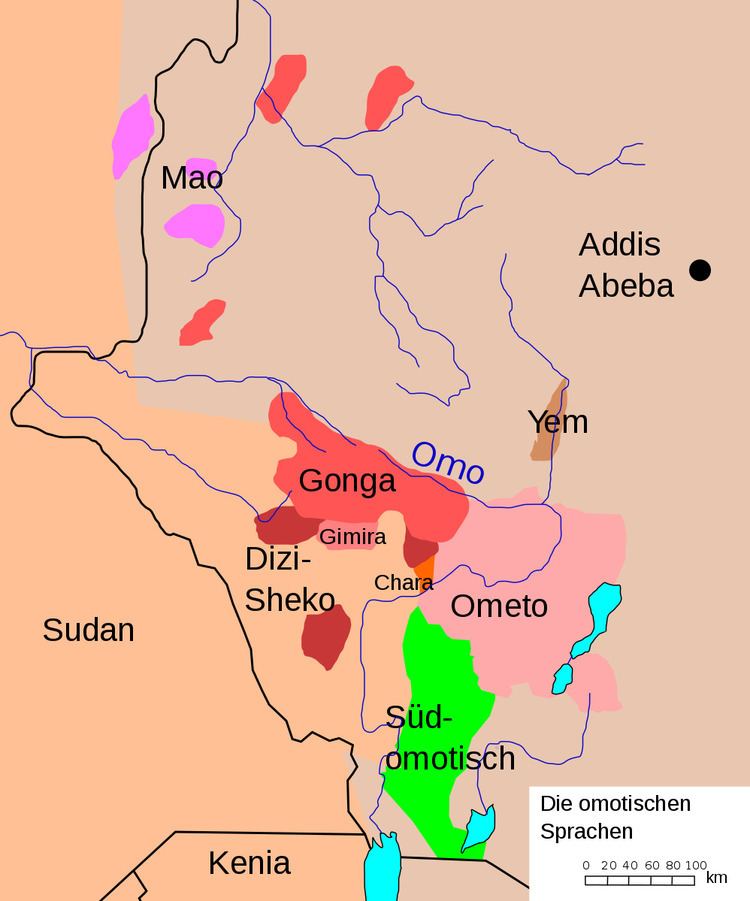Geographic
distribution Ethiopia ISO 639-5 omv | Linguistic classification Afro-Asiatic
Omotic Glottolog None | |
 | ||
Subdivisions North Omotic (Kaffa)
South Omotic (Arii)
? Mao South Omotic
Mao
Dizoid
Gonga (Kefoid) Gimojan languages
Yemsa
Bench (Gimira)
Chara
Ometo | ||
The Omotic languages are a branch of the Afroasiatic family spoken in southwestern Ethiopia. The Ge'ez script is used to write some Omotic languages, the Latin alphabet some others. They are fairly agglutinative and have complex tonal systems (see Bench language, for example).
Contents
Languages
The North and South Omotic branches ("Nomotic" and "Somotic") are universally recognized. The primary debate is over the placement of the Mao languages. Bender (2000) classifies Omotic languages as follows:
Apart from terminology, this differs from Fleming (1976) in including the Mao languages, whose affiliation had originally been controversial, and in abolishing the "Gimojan" group. There are also differences in the subclassification of Ometo, which is not covered here.
Hayward (2003) separates out the Mao languages as a third branch of Omotic, and breaks up Ometo–Gimira:
Blench (2006) gives a more agnostic classification:
Bosha† is unclassified; Ethnologue lists it as a dialect of Kafa, but notes it may be a distinct language.
Classification
Omotic is generally considered the most divergent branch of the Afroasiatic languages. Greenberg (1963) had classified it as the Western branch of Cushitic. Fleming (1969) argued that it should instead be classified as an independent branch of Afroasiatic, a view which Bender (1971) established to most linguists' satisfaction, though a few linguists maintain the West Cushitic position, or that only South Omotic forms a separate branch, with North Omotic remaining part of Cushitic. Blench (2006) notes that Omotic shares honey-related vocabulary with the rest of Afroasiatic, but not cattle-related vocabulary, suggesting that the split occurred before the advent of pastoralism. A few scholars have raised doubts that the Omotic languages are part of the Afroasiatic language family at all, and Theil (2006) proposes that Omotic be treated as an independent family. However, the general consensus, based primarily on morphological evidence, is that membership in Afroasiatic is well established.
